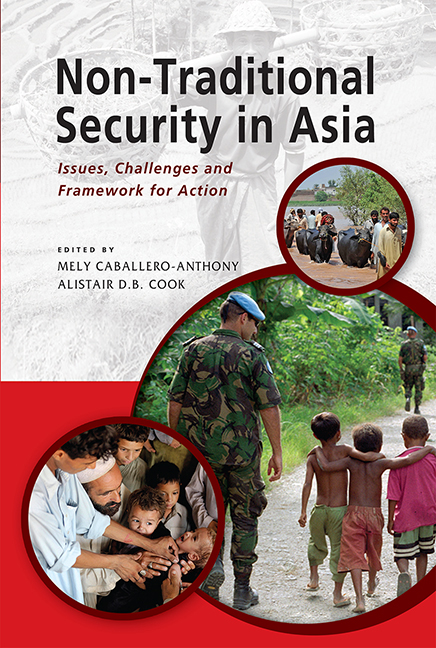3 - Food
Published online by Cambridge University Press: 21 October 2015
Summary
The global food price shocks in 2007/2008 have demonstrated the need to effectively address food insecurity in Southeast Asia — both at the national and regional level. This chapter goes beyond issues of supply and demand of food, and provides greater insight into the role of Human Security in understanding the issue of food security in a holistic manner. The rising price of rice in recent years has caught the attention of both people and policy-makers in the ASEAN region. According to the Asian Development Bank, Indonesia and Vietnam are amongst the Asian countries that have experienced double digit food price inflation during the 2007–08 food price crisis. Needless to say, food price inflation has also been on the rise in their neighbouring countries as well. At the time, global stocks of major cereals fell significantly, showing the growing disparity between production and consumption. With the stock-to-use ratios at their lowest for rice in 2006 and wheat in 2007. While stocks have improved since the food price crisis, they remained at 400 million metric tonnes in 2010 as compared to 547 million metric tonnes of grain in 1999. The impact of this on the region has been crippling as rice is considered as a primary commodity — both economically and socially — in Southeast Asia. It distinguishes itself from other commodities such as corn and wheat that are considered to have “multi-end-use”. For many Asian countries, rice has no substitute in many diets. This is reinstated in the fact that Asia was noted as both the producer and consumer of approximately 96 per cent of the world's rice in 2009/10 by the U.S. Department of Agriculture. Countries like Vietnam and Thailand are the top two largest rice exporters in the world in 2010/11, whereas the Philippines was listed as the world's top importer in the world rice trade in 2010/11.
While the functions of the ASEAN member states may differ, one factor remains constant even after the 2007–08 global food crisis, which is that the poor and marginalized are the worst affected. This is significant in ASEAN member states as the overwhelming majority of its member states are developing countries.
- Type
- Chapter
- Information
- Non-Traditional Security in AsiaIssues, Challenges and Framework for Action, pp. 40 - 65Publisher: ISEAS–Yusof Ishak InstitutePrint publication year: 2013



